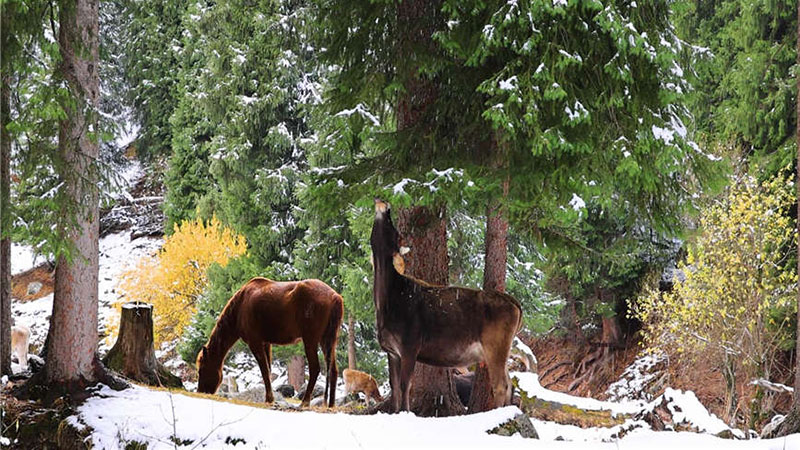China enhances efforts to promote biodiversity conservation
Local authorities and relevant departments have enhanced efforts to advance biodiversity conservation with institutional construction and scientific research over the recent years, to improve the diversity, stability and sustainability of China's ecosystems.
Dulong is an ethnic minority group residing in the mountains of southwest China's Yunnan Province. In Yunnan's Nujiang Lisu autonomous prefecture, the ethnic group enjoys a unique apiculture technique developed by its ancestors, which significantly boosts local apiculture by employing 38 kinds of plants.
As bees are a major pollinator for Lanxangia tsaoko, a traditional Chinese herbal medicine and a featured commercial crop of the prefecture, apiculture also drives the development of the local Lanxangia tsaoko business.
In 2021, the apiculture technique of the Dulong ethnic minority group was listed as a major program of biodiversity conservation by the Ministry of Ecology and Environment.

Two men from Dulong ethnic minority group in Nujiang Lisu autonomous prefecture, southwest China's Yunnan Province check beehives. (Photo by People's Daily app)
So far, Yunnan Province has established a complete biodiversity conservation system covering the investigation of wild plant species, preservation of germplasm resources, as well as artificial breeding and rewilding.
The province is now home to 362 nature reserves of various levels, which effectively put under protection 90 percent of its typical ecosystems and 80 percent of key wildlife.
Over the past 10 years, China has advanced in-situ and ex-situ conservation of wildlife in a coordinated manner. The country made a list of major habitats and designated nature reserves to prevent engineering projects from undermining the habitats of wild species.
It has established a nature reserve system based around national parks, incorporating important ecological corridors and typical ecosystems into national parks.
Now, with a protected land area of 230,000 square kilometers, China's first batch of national parks is home to nearly 30 percent of the key terrestrial wildlife species found in the country.

Giant pandas play at Shenshuping base of China Conservation and Research Center for Giant Pandas in Wolong National Nature Reserve, southwest China's Sichuan Province, Oct. 28, 2022. (People's Daily Online/Chen Xianlin)
Over the past 10 years, China has carried out holistic conservation and systematic governance of mountains, rivers, forests, farmlands, lakes, grasslands and deserts, and implemented major biodiversity conservation projects and systematic campaigns to save endangered species. The country now has designated 35 priority areas for biodiversity protection.
Technology also plays an important role in biodiversity conservation.
In Liziping National Nature Reserve in Shimian county, Ya'an, southwest China's Sichuan Province, a lab was established in January 2018 for the protection of small populations of giant pandas. The lab set up a DNA data base of giant pandas in the county, which helped realize targeted management of small populations of the rare animal in the county.
Internet, big data, internet of things, remote sensing, radar, drones and other information technologies are employed in an ecological monitoring center near a national-level nature reserve of the Yellow River Delta in east China's Shandong Province. These technologies have built a three-dimensional real-time monitoring network that ensures the breeding of bird species is free from human activities
Over the past 10 years, the wild population of more than 300 rare animal and plant species recovered or increased. Ninety percent of typical terrestrial ecosystems and 74 percent of the country's key wildlife species have been effectively protected.
At present, 1,864 wild giant pandas are living across the country, and the number of wild crested ibises has exceeded 6,000. The number of wild Asian elephants reached 300, and that of Tibetan antelopes over 300,000. China has nearly 200 botanical gardens where over 20,000 plant species, or over 60 percent of the country's indigenous plant species, are under conservation.

Birds fly over a wetland in a national-level nature reserve of the Yellow River Delta in east China's Shandong Province, Oct. 10, 2022. (People's Daily Online/Zhao Yingli)
Photos
Related Stories
Copyright © 2022 People's Daily Online. All Rights Reserved.









